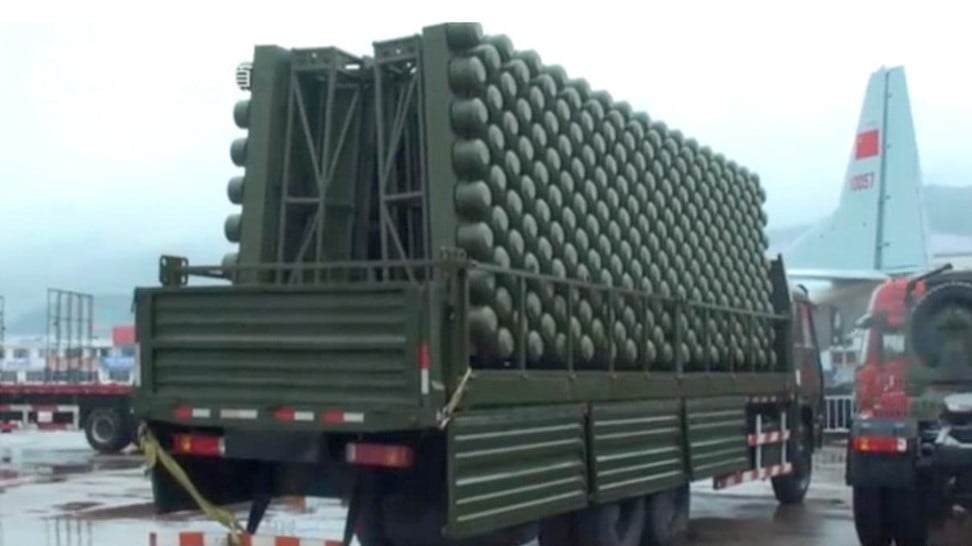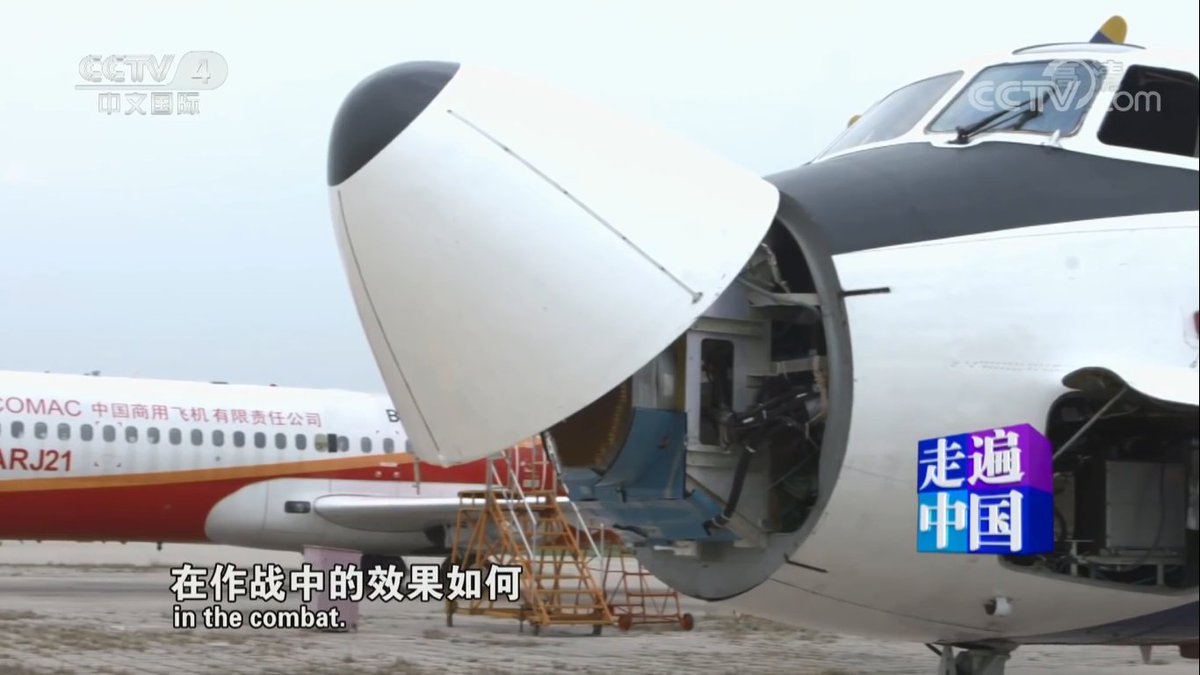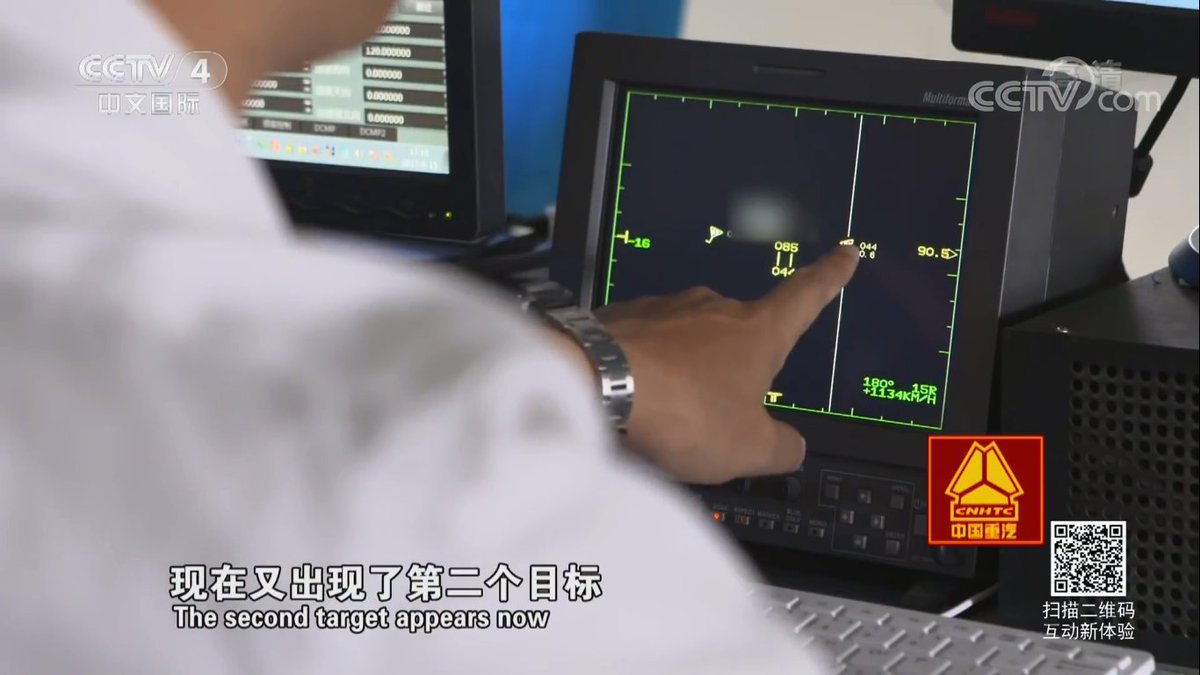How authoritative is the article? It ends with a gif.The story of the J-10B’s radar gets even more confusing...
You are using an out of date browser. It may not display this or other websites correctly.
You should upgrade or use an alternative browser.
You should upgrade or use an alternative browser.
Chinese Radar Developments - KLJ series and others
- Thread starter indochina
- Start date
How authoritative is the article? It ends with a gif.
I found the original post.
Not very authoritative. It is a blog written by a fan. I thought it was an interesting read, but we have to take it with a grain of salt.
by78
General
Was this posted before? it is a comprehensive review of the history of Chinese radar development.
Some quick takeaways:
- Chinese radar development was very backward before 1990
- Chinese learned about the basic design of Pulse Doppler radar from AN/APG66V2, EL/M-2032, Grifo-7/s, and N001
- The NRIET Type 1473 for first gen J10 was a major breakthrough in China's radar development, it is still very much behind
- J10 equipped with Type 1473 with improved DSP chips easily beat N001 on China's first gen J11/Su27
- China had since greatly improved (1) antenna design, (2) DSP chips (3) ADC
- JF-17's radar was small but very good radar, beats Grifo-S, RDY, etc.
- J10B was delayed waiting for the PESA radar, but eventually ended up with a AESA radar instead, this also explains why J10B and J10C were almost completed at the same time with very a short interval
- Today China's main focus is AESA, the latest radar for 5th gen fighters (assuming for J-20) is the 3rd gen tile type AESA, GaN and very good DSP capability
- The new small size (550mm) radar for JF-17's new version is better performing than the radars on (Indian's) Su-30
Pretty sure this is a fanboy article and not at all reliable. Ignore it.
Last edited:
Hendrik_2000
Lieutenant General
A of Wu Jianqi and his work on anti-stealth radars.
Previously.Over the past 28 years, Wu Jianqi has always adhered to its mission and watched the blue sky. The DBF system coordinate radar that he participated in was awarded the first prize of the State Scientific and Technological Progress Award, marking the first time for China's radar to catch up with the world's advanced level. The leading developed Sparse Array Integrated Pulsed Aperture Radar Test system, mobile three-coordinate m-wave radar, has won the second prize of national scientific and technological progress, to fill China's anti-stealth radar equipment blank, leading the world's leading indicators. Due to outstanding achievements, he has won the national outstanding science and technology workers, the National Innovation Award first prize and other honors.
"In the next step, we will march toward the fifth generation of anti-stealth radar and strive to achieve distributed cooperative detection." According to Wu Jianqi, the fifth-generation anti-stealth radar will be used to "deal" with supersonic cruise, Unmanned, amphibious operations and other characteristics of the fifth-generation stealth fighter; from the technical direction, the combination of microwave and photon technology to achieve holographic perception, intelligence and software, not only can detect stealth fighter, but also be able to distinguish Specific models, and even identify which aircraft.
Tracking doesn't necessarily mean engaging.
Hendrik_2000
Lieutenant General
How good is Chinese radar well this article below should give it a hunch
How China is using military radar technology to wage war on mosquitoes
Scientists are developing a device to detect the insect flapping its wings up to 2km away – and it could be used to save millions of lives, researcher says
PUBLISHED : Friday, 30 March, 2018, 10:27am
UPDATED : Friday, 30 March, 2018, 11:10am
A prototype of the device is being tested at a defence laboratory at the Beijing Institute of Technology (BIT), said the researcher, who declined to be named as the project involves sensitive technology used in China’s missile defence system.
“Identifying and tracking individual, mosquito-sized targets is no longer science fiction,” he said. “We are actually quite close to bringing this technology out of the laboratory and using it to save lives.”
Mosquitoes have claimed more human lives than all wars combined – their infectious bites still cause more than one million deaths each year, according to the World Health Organisation.
The insect plays host to a wide range of disease-bearing microorganisms, from malaria to newer viruses such as .
Controlling the pest is a major challenge, though, as they can come and go almost without a trace – their familiar buzzing is a giveaway, but only when they are close by.
After decades of development, modern military radars can now pick up the echoes of small objects at an impressive distance. The US Missile Defence Agency’s sea-based X-band radar, for example, can detect a baseball-sized object from about 4,000km (2,500 miles) away.
The radar will be a “precision-guided weapon in our war against the deadliest creature on Earth”
LIU XINGYUE, PROFESSOR AT THE CHINA AGRICULTURAL UNIVERSITY IN BEIJING
China has developed radar systems with similarly advanced features to track missiles and stealth aircraft, but some scientists working on these military projects believed the technology could also be used to fight mosquitoes – and they convinced the government to fund their research.
The team, led by Long Teng, received funding of more than 82 million yuan (US$12.9 million) from the central government at the end of last year to build a full-sized mosquito detection radar that could be tested in the field.
Long is director of BIT’s Radar Technology Research Institute and a lead scientist on China’s key military radar programme, according to the university’s website. He could not be reached for comment.
The radar works by emitting rapid pulses of electromagnetic waves that travel at many frequencies, according to the scientist working on the project. When the radio waves hit a mosquito they bounce back with information including species, gender, flying speed and direction, and whether the insect has eaten.
It could be mounted on a rooftop overlooking a residential community and used to pinpoint the position of major mosquito colonies, their breeding and resting areas. And if a colony was migrating to another neighbourhood, households in its way could be warned.
Scientists in other countries have used civilian radar networks to track the group movement of birds or larger insects such as locusts and moths, but this is believed to be the first attempt to use radars to monitor mosquitoes.
The researcher said the prototype had achieved unprecedented sensitivity because the authorities had allowed the team to build the system using the latest military radar technology.
It has, for example, an advanced phased array antenna similar to those used on China’s latest warships. The antenna can beam microwaves in different directions at the same time and can detect missiles or military jets much faster than conventional radars that use a rotating dish.
It also has a separate antenna to generate radio waves oscillating in more than one direction. Known as polarisation, this provides detailed information about a target so that the researchers can distinguish a hungry, blood-sucking female mosquito from a pollen-eating male.
A fast computer then uses an algorithm to simultaneously identify and follow the movement of many mosquitoes in the same community.
The project is a collaboration between insect behaviourists and scientists from many other disciplines, according to the researcher. By providing a vast amount of data, the radar has the potential to help biologists learn more about the individual and collective behaviour of the pest, which could lead to new strategies to fight the spread of mosquito-borne diseases.
The researcher added that the team had made progress on the existing technology and it could also have military applications, without elaborating. He also declined to say when the first full-sized radar would be completed.
“We are building one or two units at the moment. In the future we hope the radar will be made in large numbers and installed across the country to form a large network to monitor the movements of airborne animals [as well as mosquitoes],” he said.

Yi Zhenyuan, an award-winning military radar researcher and deputy director of the electrical engineering department at Harbin Institute of Technology, said identifying and tracking such a minuscule target from kilometres away was extremely difficult.
Existing military radar technology could detect small, uncooperative signals from hundreds to thousands of kilometres away, but mosquitoes were “another story”, he said.
Yi, who has knowledge of the radar but is not involved in the project, said mosquitoes would be more difficult to detect than a stealth aircraft like the F-22, which has a special coating and geometric design to avoid showing up on radar screens.
“Mosquito wings of course are a lot different from the metal wings of a military jet, and so are their structures, shapes and movements. The mosquito radar is going to need a completely new set of algorithms,” he said.
Mosquitoes also fly at low speed, sometimes just hovering in the air, which makes some of the military radar technology designed to detect fast-moving targets less useful to the project.
The biggest challenge will come from the environment, Yi said, since the radio waves from a mosquito were extremely weak and could easily be overwhelmed by background noise.
“So what works perfectly well in a laboratory may not be so successful out in the field,” he said.
Liu Xingyue, a professor of insect studies at the China Agricultural University in Beijing, said the radar programme could allow pest controllers to closely monitor mosquito and other small insect populations in an area.
He said regions including the northeast of China, tropical countries and Africa were still troubled by mosquitoes and the diseases they carried.
Behavioural differences such as wing flapping could be picked up by the radar, giving scientists a “precision-guided weapon in our war against the deadliest creature on Earth”, he said. “Millions of lives could be saved.”
How China is using military radar technology to wage war on mosquitoes
Scientists are developing a device to detect the insect flapping its wings up to 2km away – and it could be used to save millions of lives, researcher says
PUBLISHED : Friday, 30 March, 2018, 10:27am
UPDATED : Friday, 30 March, 2018, 11:10am
A prototype of the device is being tested at a defence laboratory at the Beijing Institute of Technology (BIT), said the researcher, who declined to be named as the project involves sensitive technology used in China’s missile defence system.
“Identifying and tracking individual, mosquito-sized targets is no longer science fiction,” he said. “We are actually quite close to bringing this technology out of the laboratory and using it to save lives.”
Mosquitoes have claimed more human lives than all wars combined – their infectious bites still cause more than one million deaths each year, according to the World Health Organisation.
The insect plays host to a wide range of disease-bearing microorganisms, from malaria to newer viruses such as .
Controlling the pest is a major challenge, though, as they can come and go almost without a trace – their familiar buzzing is a giveaway, but only when they are close by.
After decades of development, modern military radars can now pick up the echoes of small objects at an impressive distance. The US Missile Defence Agency’s sea-based X-band radar, for example, can detect a baseball-sized object from about 4,000km (2,500 miles) away.
The radar will be a “precision-guided weapon in our war against the deadliest creature on Earth”
LIU XINGYUE, PROFESSOR AT THE CHINA AGRICULTURAL UNIVERSITY IN BEIJING
China has developed radar systems with similarly advanced features to track missiles and stealth aircraft, but some scientists working on these military projects believed the technology could also be used to fight mosquitoes – and they convinced the government to fund their research.
The team, led by Long Teng, received funding of more than 82 million yuan (US$12.9 million) from the central government at the end of last year to build a full-sized mosquito detection radar that could be tested in the field.
Long is director of BIT’s Radar Technology Research Institute and a lead scientist on China’s key military radar programme, according to the university’s website. He could not be reached for comment.
The radar works by emitting rapid pulses of electromagnetic waves that travel at many frequencies, according to the scientist working on the project. When the radio waves hit a mosquito they bounce back with information including species, gender, flying speed and direction, and whether the insect has eaten.
It could be mounted on a rooftop overlooking a residential community and used to pinpoint the position of major mosquito colonies, their breeding and resting areas. And if a colony was migrating to another neighbourhood, households in its way could be warned.
Scientists in other countries have used civilian radar networks to track the group movement of birds or larger insects such as locusts and moths, but this is believed to be the first attempt to use radars to monitor mosquitoes.
The researcher said the prototype had achieved unprecedented sensitivity because the authorities had allowed the team to build the system using the latest military radar technology.
It has, for example, an advanced phased array antenna similar to those used on China’s latest warships. The antenna can beam microwaves in different directions at the same time and can detect missiles or military jets much faster than conventional radars that use a rotating dish.
It also has a separate antenna to generate radio waves oscillating in more than one direction. Known as polarisation, this provides detailed information about a target so that the researchers can distinguish a hungry, blood-sucking female mosquito from a pollen-eating male.
A fast computer then uses an algorithm to simultaneously identify and follow the movement of many mosquitoes in the same community.
The project is a collaboration between insect behaviourists and scientists from many other disciplines, according to the researcher. By providing a vast amount of data, the radar has the potential to help biologists learn more about the individual and collective behaviour of the pest, which could lead to new strategies to fight the spread of mosquito-borne diseases.
The researcher added that the team had made progress on the existing technology and it could also have military applications, without elaborating. He also declined to say when the first full-sized radar would be completed.
“We are building one or two units at the moment. In the future we hope the radar will be made in large numbers and installed across the country to form a large network to monitor the movements of airborne animals [as well as mosquitoes],” he said.

Yi Zhenyuan, an award-winning military radar researcher and deputy director of the electrical engineering department at Harbin Institute of Technology, said identifying and tracking such a minuscule target from kilometres away was extremely difficult.
Existing military radar technology could detect small, uncooperative signals from hundreds to thousands of kilometres away, but mosquitoes were “another story”, he said.
Yi, who has knowledge of the radar but is not involved in the project, said mosquitoes would be more difficult to detect than a stealth aircraft like the F-22, which has a special coating and geometric design to avoid showing up on radar screens.
“Mosquito wings of course are a lot different from the metal wings of a military jet, and so are their structures, shapes and movements. The mosquito radar is going to need a completely new set of algorithms,” he said.
Mosquitoes also fly at low speed, sometimes just hovering in the air, which makes some of the military radar technology designed to detect fast-moving targets less useful to the project.
The biggest challenge will come from the environment, Yi said, since the radio waves from a mosquito were extremely weak and could easily be overwhelmed by background noise.
“So what works perfectly well in a laboratory may not be so successful out in the field,” he said.
Liu Xingyue, a professor of insect studies at the China Agricultural University in Beijing, said the radar programme could allow pest controllers to closely monitor mosquito and other small insect populations in an area.
He said regions including the northeast of China, tropical countries and Africa were still troubled by mosquitoes and the diseases they carried.
Behavioural differences such as wing flapping could be picked up by the radar, giving scientists a “precision-guided weapon in our war against the deadliest creature on Earth”, he said. “Millions of lives could be saved.”





